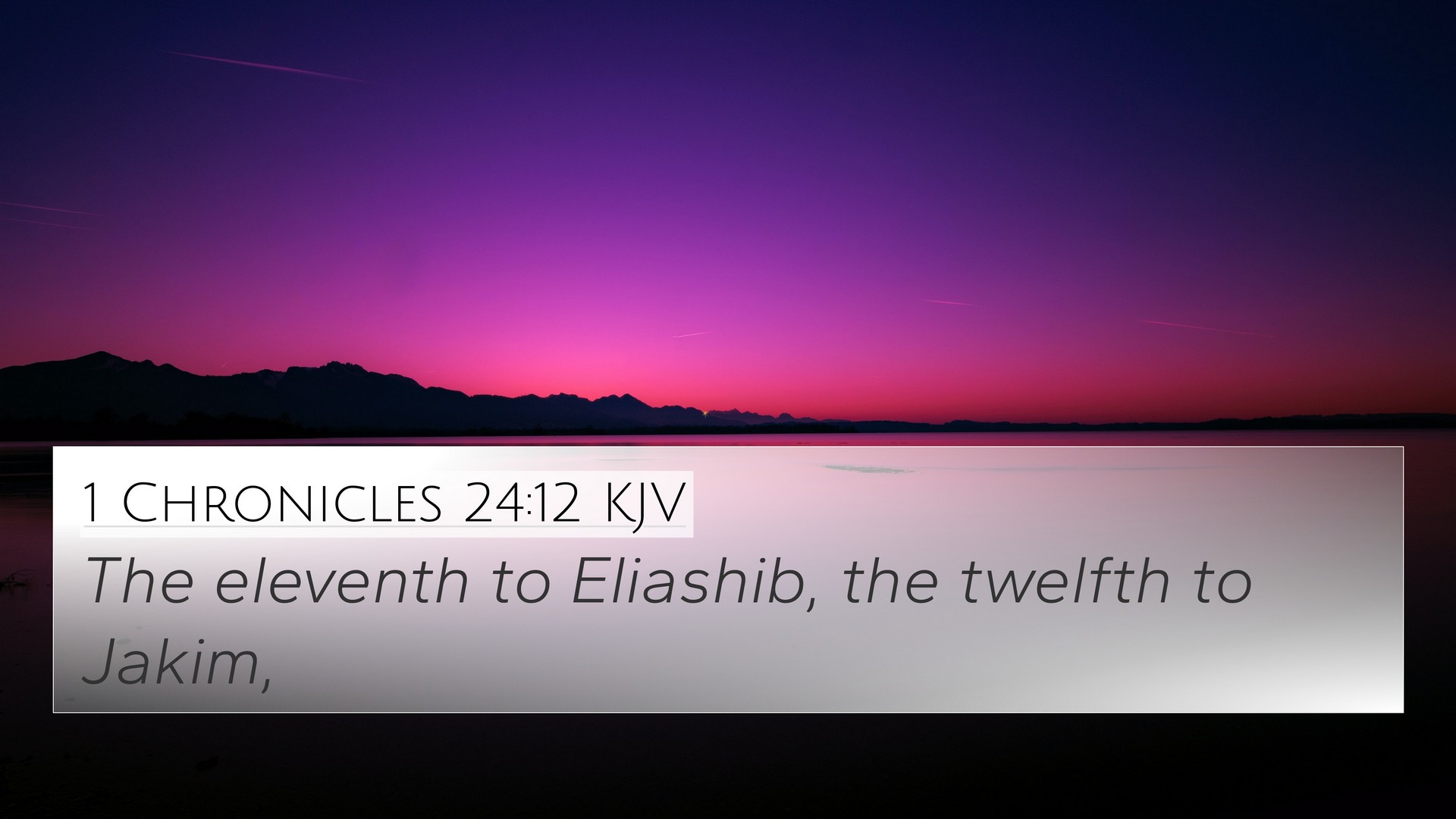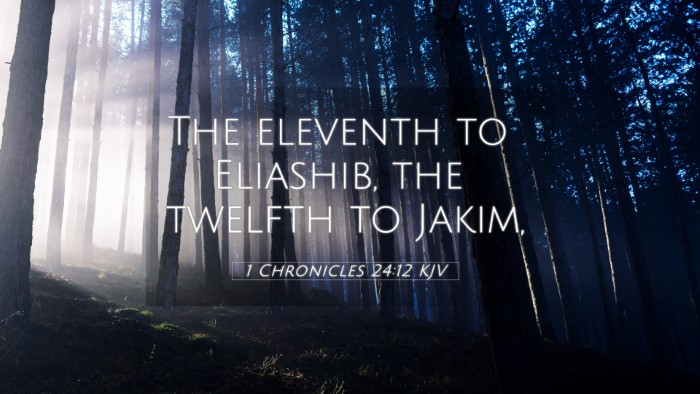Understanding 1 Chronicles 24:12
This verse states: "The twelfth to Ahitub, his sons and his brethren, were twelve." This brief mention in the Chronicles highlights the organization of the Levitical priesthood and its careful arrangement through the lineage of Aaron. Such verses provide insights into the structure of service within the temple and the responsibilities assigned to different families.
The following are key insights derived from public domain commentaries:
- Matthew Henry: Henry emphasizes the meticulous manner in which God organized His priests. The division of service among the Levites through their genealogies demonstrates the importance of order in worship and the distinct roles that families played in serving God, which was essential for maintaining the sanctity of the Temple.
- Albert Barnes: Barnes elaborates that this verse is part of a larger listing detailing the divisions of priests. He points out that the mention of specific names serves to record the faithfulness and heritage of those who served, thus underscoring the continuity of worship practices from generation to generation.
- Adam Clarke: Clarke's insights focus on the social and historical context of the Levitical duties. He notes that such lists were crucial for historical accuracy and for the Jewish community to recognize their heritage and the significance of their religious duties.
Bible Verse Cross-References
1 Chronicles 24:12 connects with several key passages throughout the Bible, revealing thematic and historical interrelations:
- Exodus 28:1 - God's command to consecrate Aaron and his sons as priests.
- Leviticus 8:1-13 - The ordination of Aaron and his sons, establishing priestly functions.
- 1 Chronicles 6:49 - Details a similar listing and further emphasizes the lineage of Aaron.
- Hebrews 7:11 - Discusses the priesthood of Aaron, providing New Testament context regarding the eternal priesthood of Christ.
- Luke 1:5 - Identifies Zechariah as a priest of the division of Abijah, showing the enduring divisions of the priestly order.
- Ezra 3:2 - References Jeshua, the son of Jozadak, of the priestly line, tying post-exilic worship back to the original order.
- Matthew 2:6 - References Bethlehem as significant according to the prophecy, linking to the lineage of David, akin to Aaron’s family in leadership through lineage.
- Revelation 1:6 - Highlights believers as a kingdom of priests, indicating the fulfillment of the priesthood concept in the New Covenant.
- 1 Corinthians 3:10-15 - Paul’s discussion on the foundational work of Christ correlates with the role of priests in laying spiritual foundations.
- 1 Peter 2:9 - Describes the priestly nature of all believers, drawing parallels between the roles of Old Testament priests and the New Covenant community.
Thematic Bible Verse Connections
The organization of priestly duties as illustrated in 1 Chronicles serves to reinforce several overarching themes within scripture:
- Divine Order: The precise organization reflects God's desire for order in worship and service, as seen throughout both the Old and New Testaments.
- Generational Faithfulness: The emphasis on family lineage signifies the importance of faith being passed through generations.
- Service to God: The priestly duties outlined speak to the broader concept that all believers are called to serve God, which is echoed in the New Testament.
- The Fulfillment of Prophecy: Connections between the roles established in the Old Testament and their fulfillment in Christ underline the cohesion of scripture.
Utilizing Bible Cross-References
Tools for Bible Cross-Referencing:
- Bible Concordance: A comprehensive tool for locating scripture references.
- Bible Cross-Reference Guide: A resource for identifying relationships between disparate verses.
- Cross-Reference Bible Study: Methods for deeper exploration of the Bible’s interconnected themes.
- How to Use Bible Cross-References: Techniques for effectively navigating scriptural links.
Conclusion
In summary, 1 Chronicles 24:12 not only identifies a division among the priests but also serves as a reminder of the structure and seriousness with which God commands worship. This scripture exemplifies the interconnectedness of biblical texts, showing how Old Testament themes resonate throughout the New Testament, thus providing a rich ground for comparative Bible verse analysis. Those seeking to understand and teach from the Bible can benefit significantly from an appreciation of its inter-Biblical dialogue and thematic connections.



